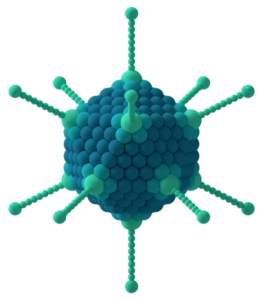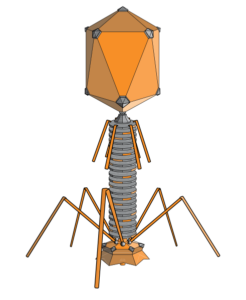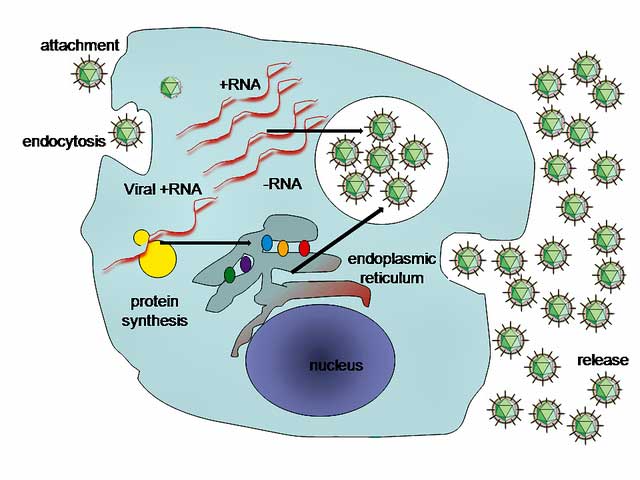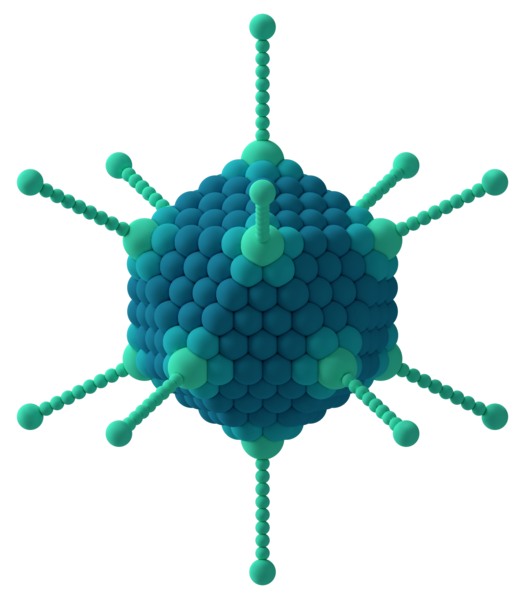A virus is an infectious agent that may spread a disease among living organisms. Structurally, virus is strands of DNA or RNA, wrapped inside a coat of proteins and/or lipids. It is a matter of debate in the scientific world, whether to consider virus a living thing or not. There are innumerable varieties of viruses in the world — probably trillions!
A virus needs a living cell (called host) to replicate itself. While replicating, virus genome may sometimes undergo mutation and thus gives rise to a new strain of the virus. About 8% of human DNA matches with the DNA of retroviruses. This indicates that our ancestors also faced viral epidemics (like COVID-19 pandemic) and over a period of time they became immune to those viruses. This immunity has been passed on to us through this 8% DNA. However, because there are so many constantly mutating viruses, we cannot be immune to all viral infections. But still humans get affected by numerous viral diseases.
Remember viruses are not same as bacteria. There are so many differences between viruses and bacteria. In fact, viruses can not be classified either as animal, plant, fungi, bacteria or anything else living.
Structure of a Virus
Structurally, a virus is extremely simple. Unlike a living cell, virus does not have ribosomes to translate its genetic material into proteins. Virus can not produce or store energy and has to depend on the host cell for everything.
A typical virus structure is composed of genetic material inside a coat of proteins and/or lipids. There are two shapes of viruses:
- Filament shaped, and
- Round shaped
A single virus particle outside the host cell is called a virion. Viroids are the disease-causing molecules of RNA that are not classified as viruses because they lack a protein coat.
In the filament type of viruses, the genetic material is arranged in a linear fashion inside a protective protein coat called capsid. The roundness or the round-shaped viruses comes from a multi-sided capsid. A 20-sided (or icosahedron) capsid shape is very common among viruses. In this shape, 20 triangular faces make up the capsid. Most of the animal viruses have an icosahedron capsid.

Bacteriophage viruses have a more evolved structure which they use in the process of infecting a host cell. A bacteriophage virus structure consists of a tail and tail fibers under a icosahedron capsid. The virus uses the tail fibers to attach itself to the host cell membrane. Then the virus transfers its genetic material into the host cell through the tail.

Life Cycle of a Virus
The only life like function that a virus has is that it can reproduce. A virus is capable of making its replicas. But it can not do so without using resources from the host cell. Life cycle of a virus consists of the following phases:
1. Attachment
Virus attaches itself to the cell membrane. Capsid proteins bind with specific receptors on the host cellular surface. The capsid proteins and receptor proteins bind in a lock and key manner. This means that a virus can infect only those host cells that have receptor proteins required by the virus to attach itself. This mechanism has probably evolved in viruses so that virus does not invade a cell where it can not replicate.
2. Penetration
In this phase, the virus enters the host cell. In case of animal cells, the virus uses membrane fusion method to get inside the cell. Plant cell walls are impenetrable for viruses. Therefore, virus can enter only when some trauma damages the cell wall. Bacterial cell walls are also comparatively thicker than animal cell wall, but it is thinner than the plant cell walls. Some bacteria infecting viruses have developed a penetration mechanism in which they inject the genetic material inside the bacteria while the capsid remains outside.
3. Uncoating
Viral enzymes or the host cell enzymes dissolve the viral capsid. This causes the release of genetic material in the host cell.
4. Replication
This is the most important phase. Here the viral genome replicates using the host cell machinery. Replication process depends on the type of viral genetic material. After replication of genetic material, virus uses host cell ribosomes and amino acids for protein synthesis.

5. Assembly
New virus particles assemble with replicated genetic material while newly synthesized proteins make new capsids.
6. Release
When the new virus particles are ready, they burst out of the cell-membrane or cell-wall using a process called lysis. Some viruses (like HIV) get out of the host cell by budding. Viruses like bacteriophages, make their genetic material part of the host genetic material. When the host cell divides, the viral genome also replicates along with the host cell. The viral genome remain mostly silent in such cases but new virus particles may burst out by the process of lysis.
Classification of Viruses
The Baltimore Classification System created by David Baltimore classifies viruses in seven categories:
- dsDNA viruses having double stranded DNA as genetic material (e.g. Adenoviruses, Herpesviruses, Poxviruses)
- ssDNA viruses having single stranded DNA as genetic material DNA (e.g. Parvoviruses)
- dsRNA viruses having double stranded RNA as genetic material (e.g. Reoviruses)
- (+)ssRNA viruses (+ strand or sense) having +single stranded RNA as genetic material (e.g. Picornaviruses, Togaviruses)
- (−)ssRNA viruses (− strand or antisense) having -single stranded RNA as genetic material (e.g. Orthomyxoviruses, Rhabdoviruses)
- ssRNA-RT viruses (+ strand or sense) RNA with DNA intermediate in life-cycle (e.g. Retroviruses)
- dsDNA-RT viruses DNA with RNA intermediate in life-cycle (e.g. Hepadnaviruses)
Use the citation below to add this article to your bibliography
"What is a Virus? Let’s Learn its Structure and Life Cycle." Dashamlav.com. Web. 13 June 2025. <https://dashamlav.com/virus-structure-life-cycle/>
Dashamlav.com, "What is a Virus? Let’s Learn its Structure and Life Cycle." Accessed 13 June 2025. https://dashamlav.com/virus-structure-life-cycle/
"What is a Virus? Let’s Learn its Structure and Life Cycle." (n.d.). Dashamlav.com. Retrieved 13 June 2025 from https://dashamlav.com/virus-structure-life-cycle/

